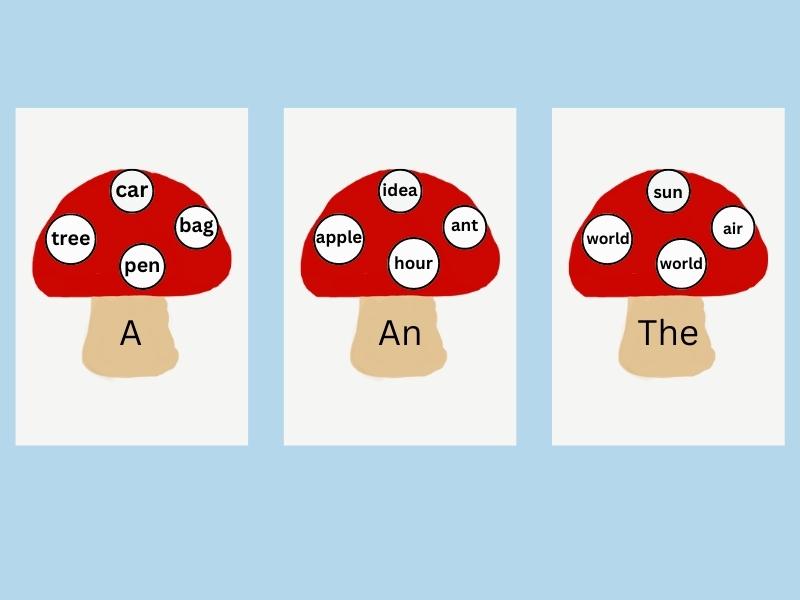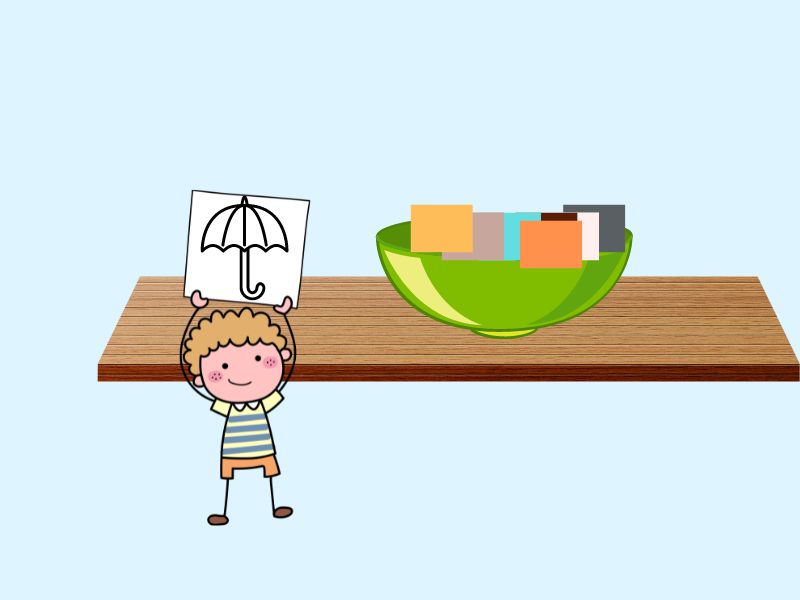Articles are words used before nouns to modify them. Articles give more information about nouns in the sentence while defining whether it is in a specific context or a general context. Primarily, there are three articles in English Grammar, a, an, and the. These articles are categorized into different types as per their usage.
Teaching articles is not a complex task if the focus is more on understanding in terms of context and the right usage. For this, a fun learning environment involving activities can be used to promote the growth of phonetics and build up grammatical skills.
This post includes the activities primarily focusing on “article” that helps strengthen the concept as well as making their usage easy to grasp in different types of sentences.
Interesting & engaging activities to teach articles
The article activities mentioned below are beneficial to make learning easy to access and ideal for practice and revision. These will make even the hardest concepts of articles easy and efficient.
1. Pick the right article

For this activity, three different colored open bowls/plates will be required. Each bowl will have a sticker attached to its mentioning articles such as a, an, and the.
- Place the sticker on top of the bowls.
- The first one is for “a”, second for “an”, and the third for “the”.
- Make small cards with names of different objects relating to places, things, and people.
- Distribute these cards evenly to the class.
- Now ask each student to drop each card according to the articles they will match.
- For example, Taj Mahal would go in ‘the’ basket, apples would go in ‘an’ and cake would go in ‘a’ basket.
Through this activity, students will be able to practice the basics of articles. The cards are quite basic and easy to understand. This activity is very helpful in differentiating basic objects with an accurate understanding of articles.
2. Run like an electric current
For this activity, make students stand in a line. The players closest to the tutor are at position 1 and it increases with each passing player. So the closest player is at 1 and the last player is at 10.
- The tutor says a number between 1-10.
- The student sitting after that number needs to stand up as per the number.
For instance, if the tutor has said the number “5”, then the student sitting at the number “6” needs to give the answer. This part of the activity will make the students pay attention while playing so that they don’t miss their turn.
- Then the tutor shall say some words, the players have to guess the article that grammatically fits with it accurately.
- Each pair will get three words or statements for guessing the right articles.
This quiz-based activity enhances the critical thinking and quick reflexes of the players. It also helps players revise and engage with new learning skills.
3. Articles Mushrooms

Drawing and grammar can be intermixed to enhance learning as well as creative skills. The requirements for this activity are yellow and red chart papers, scissors, a black pen, a scale, a pencil, and glue.
- Divide the red chart paper into 3 equal-shaped rectangles.
- Draw the shape of mushroom crowns on it and cut it with scissors.
- Paste this cutout on the yellow chart paper at equal distances from each other.
- Draw the trunk of the mushroom with the black pen.
- Write articles such as a, an, and the on the trunks of mushrooms.
- Make small circles on the mushroom crown.
- The tutor will dictate some words with articles.
- Students need to write the correct words with articles inside small circles in the crowns of the mushrooms.
Creativity and artistic skills can get unlimited coverage in this activity. Along with this, students are able to revise and sharpen their skills with regard to an efficient and accurate knowledge of articles.
4. Articles Spinner

This is also an art-based learning activity. The essentials for it are colored pens, cardboard, glue, a cutter, scissors, and colored paper.
- On a piece of cardboard, draw a big and a small circle.
- Now cut both the circles precisely using the scissors.
- Color these circles.
- Draw 3 lines on the bigger circle which will pass through the center of the circle.
- Make sure that all lines are equidistant from each other and pass through the center.
- Similarly, divide the smaller circle into 3 lines.
- In each segment on the smaller circle, mention the articles a, an, and the.
- On the bigger circle write different words related to places, objects, or names in the segments.
- Stick a small circle on the bigger one from the center point and stick an arrow shape on it.
- Now rotate the circle with articles as per the word on the bigger circle with which it fits well.
The spinning wheel is an interesting activity that allows the players to work on their quick thinking as well as accurate grammatical skills. Understanding the context, and recognizing of the right article, are its primary benefits.
5. Fill it up

This activity will make article learning easy and accurate. Students have to choose the accurate article which fits well with the overall meaning of the sentence as per the correct voice.
- Divide the group into pairs.
- The tutor will dictate some sentences.
- Players will have to fill in the blanks while picking the article.
- Progressing through all the questions with the right answers in the minimum time will get the pair the highest points.
The benefits of this activity are understanding as well as boosting one’s memory retention skills. Moreover, students learn to comprehend the dynamic relationships between sentences, tenses, active and passive voice, and articles.
6. Find the right fit
There will be 4 questions presented to the players. With each question, there will be a picture provided to understand the context of the sentence.
- Divide the group into pairs.
- The tutor will dictate a sentence to each team.
- The team will have to guess the incorrect article.
- After guessing the incorrect article, they will have to replace it with the correct one.
Quick thinking and selecting the accurate answer are integral to this activity. It will help the players to sharpen their knowledge and understanding of articles.
7. Articles Pictionary

Pictionary is a fun and exciting medium to help students practice the concepts of articles. It will also allow them to make quick connections between different articles as per the context and grammatical requirements of the sentences.
- Divide the group into teams of 2-4.
- Each team will send a player, who will pick a chit from the bowl.
- Each chit will have an object written on it.
- The team will have to guess the object and also the article that will correspond to it.
- For example, if the player draws an umbrella, the team has to guess the article – an.
The students will be able to grasp the usage of articles. Moreover, Pictionary sparks creativity, and the visualizing skills of students are effectively enhanced.
Common mistakes while using articles
The most important concept of articles that many students get wrong is understanding the difference between them. Specifically, a and an are indefinite articles and the is a definitive article.
Furthermore, the usage of articles is not compulsory in every sentence. There are many sentences that make perfect sense without the usage of any article. For example, “Dogs are great pets” or “I am studying English”. The articles are not used because the sentence, is not talking about a particular group of dogs. Hence, it is not defined or identified anyhow.
Students can also be confused with “an” and “the” as these articles are dependent on the form of nouns. Article “an” is used for singular nouns while “the” is used for plural nouns even if the noun falls in the category of an. For example – “An elephant (singular) is gray in color” or “The elephants (plural) are gray in color”.
Conclusion
The article activities involve practice that is helpful in the revision of the concept. Such activities can be adjusted to suit the learning capabilities of the different grammatical levels of students. Not only do these activities contribute to an atmosphere of healthy competitiveness but also an outlet for the creative use of natural language in stressful situations.
Activities can be prepared in such a manner that the reinforcement of sounds is the primary basis of a clear understanding of the articles. Thus, the aforementioned articles’ activities function as reinforcement and review methods while understanding articles.

I am Shweta Sharma. I am a final year Masters student of Clinical Psychology and have been working closely in the field of psycho-education and child development. I have served in various organisations and NGOs with the purpose of helping children with disabilities learn and adapt better to both, academic and social challenges. I am keen on writing about learning difficulties, the science behind them and potential strategies to deal with them. My areas of expertise include putting forward the cognitive and behavioural aspects of disabilities for better awareness, as well as efficient intervention. Follow me on LinkedIn

